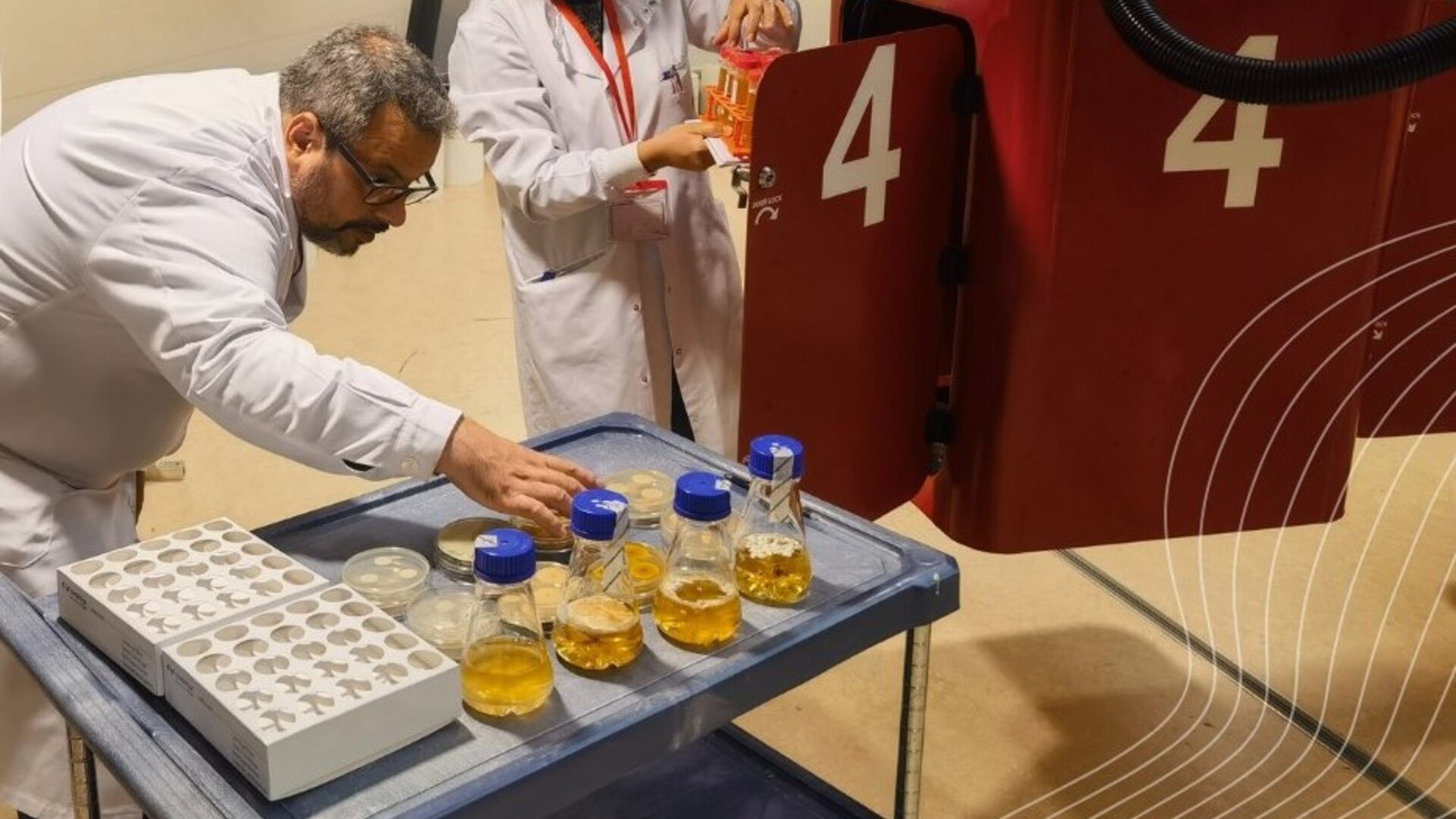Fungi creepily infiltrates space stations — but scientists aren't scared. They're excited
'We are never going to be able to get rid of fungi entirely as we venture into space, so we need to understand them.'

In 1988, astronauts aboard the now-retired Russian space station Mir realized that something had blanketed one of their windows — from the outside. The thing had even started trudging its way within the station by slowly destroying the window's titanium-quartz surface. It was later revealed that the blanket was, in fact, fungi that had piggybacked to space. And it got there by hugging onto the astronauts themselves.
This fungi had managed to adapt to the space environment, and so well that it not only survived but thrived on windows, control panels, air conditioners and cable insulators. It even contaminated the crew's precious food and water supply. Although this incident was the first time a fungus was found significantly damaging the space station, it was not the last.
Space travelers have never been, and will never truly be, alone while traveling to space.
But rather than fear this truth, scientists are trying to take advantage of it. For instance, one team associated with the European Space Agency (ESA) recently conducted hypergravity experiments on fungi to better understand how these organisms survive effortlessly in the harsh environment of space — perhaps if we can understand their mechanisms, we can use fungi to build off-world settlements someday and maybe even incorporate them into off-world medications.
Many (if not all) space-borne fungal species are like sleuths: They remain dormant during launch and on the journey to space, but then "activate" and reproduce to form thick, living mats on various regions in the space station. These mats not only threaten astronaut health but also electronics, plumbing and other components on the station.
Since the 1988 incident, there have been numerous efforts to establish robust cleaning routines for scrubbing fungi off walls and equipment before the organisms cause serious damage. Alongside these preventive efforts, scientists have also realized that studying their growth and behavior in microgravity, specifically their adaptability to repair DNA damage caused by space radiation, could actually be useful for crews during long-term crewed space missions.
Breaking space news, the latest updates on rocket launches, skywatching events and more!
For example, in 2016, researchers at NASA's Jet Propulsion Laboratory in California launched fungi into space for the first time for research purposes onboard the International Space Station (ISS). The team studied how the ISS environment caused the species, known as Aspergillus nidulans, to create certain molecules it doesn't produce on Earth. This particular fungus is well-researched for osteoporosis drugs that could help with the bone disease, which affects 10 million people in the United States alone.
During long-term space missions to the moon and even Mars, such applications would help astronauts maintain their bone density, which research already shows declines despite regular exercise routines onboard the ISS.
Similar efforts to study fungi are also being carried out on Earth. Recently, the ESA studied how fungal colonies grow in "hypergravity" environments, where artificially-created gravity conditions using a centrifuge were up to 20 times higher than on Earth.
The two-week long research, which was conducted in ESA's space technology and development center (ESTEC) in the Netherlands, tested how fully grown fungal species placed in a lab-controlled gondola responded to stressful reactions, according to a statement published Monday (Sept. 25). The names of the fungal species were not mentioned.
"We are never going to be able to get rid of fungi entirely as we venture into space, so we need to understand them," André Antunes, a researcher at the Macau University of Science and Technology in China who is part of the recent ESA study, said in Monday's statement. "In addition, they offer positive opportunities as well as risks. Down on Earth fungi are employed to make food — such as yeast for fermentation — as well as medicines, chemical enzymes for industry as well as metal nanoparticles used in numerous fields."
The team also selected certain fungal species for a second round of exposure to hypergravity, largely to investigate the extent of stress reactions. According to the statement, the study aims to better understand why fungal species thrive in microgravity conditions.
Using dormant fungi and their chemical makeup, NASA has also been exploring various technologies to grow lightweight structures on the moon and Mars that future space travelers can call home away from home.

Sharmila Kuthunur is an independent space journalist based in Bengaluru, India. Her work has also appeared in Scientific American, Science, Astronomy and Live Science, among other publications. She holds a master's degree in journalism from Northeastern University in Boston.


